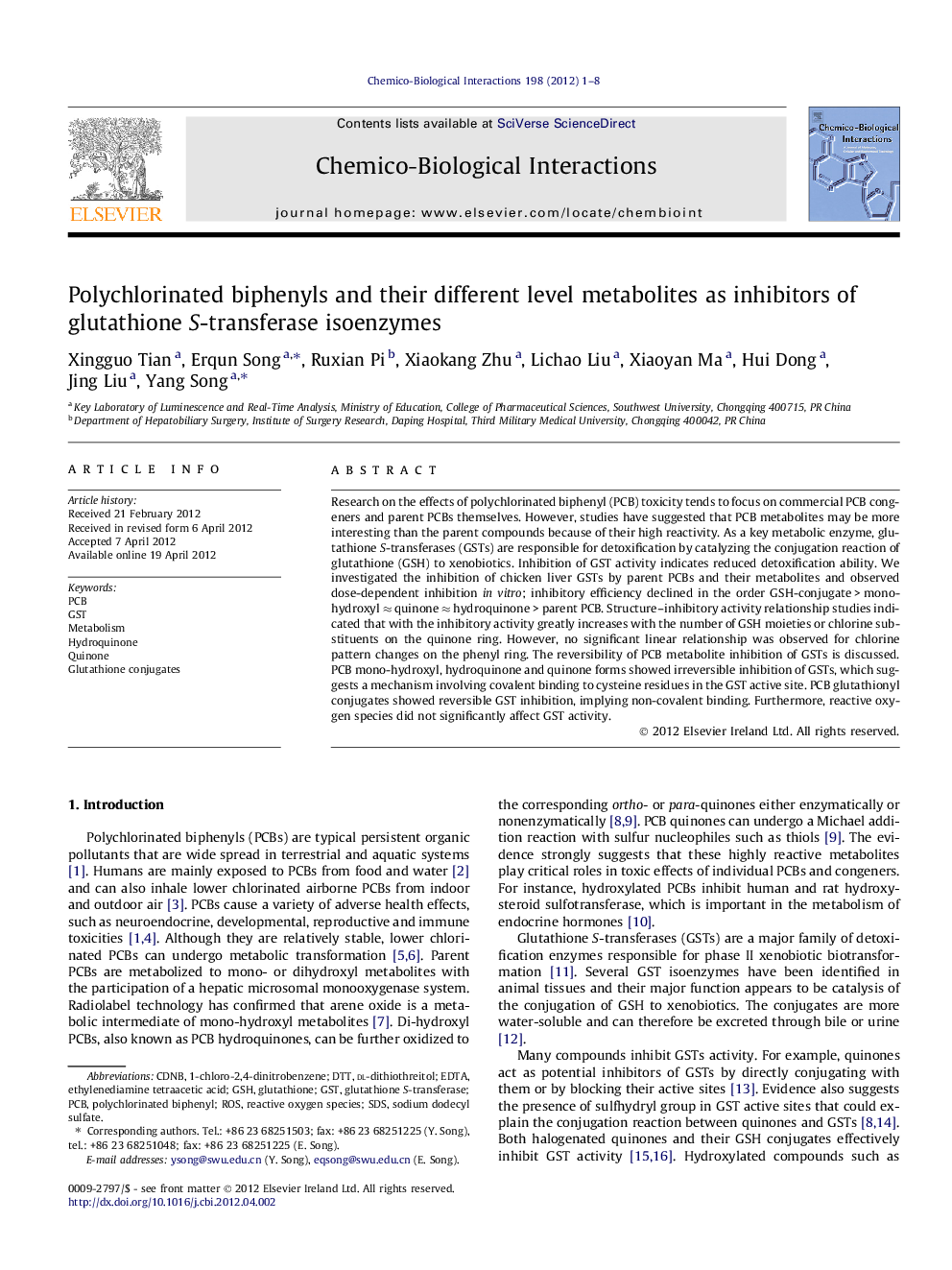| کد مقاله | کد نشریه | سال انتشار | مقاله انگلیسی | نسخه تمام متن |
|---|---|---|---|---|
| 2580804 | 1561638 | 2012 | 8 صفحه PDF | دانلود رایگان |

Research on the effects of polychlorinated biphenyl (PCB) toxicity tends to focus on commercial PCB congeners and parent PCBs themselves. However, studies have suggested that PCB metabolites may be more interesting than the parent compounds because of their high reactivity. As a key metabolic enzyme, glutathione S-transferases (GSTs) are responsible for detoxification by catalyzing the conjugation reaction of glutathione (GSH) to xenobiotics. Inhibition of GST activity indicates reduced detoxification ability. We investigated the inhibition of chicken liver GSTs by parent PCBs and their metabolites and observed dose-dependent inhibition in vitro; inhibitory efficiency declined in the order GSH-conjugate > mono-hydroxyl ≈ quinone ≈ hydroquinone > parent PCB. Structure–inhibitory activity relationship studies indicated that with the inhibitory activity greatly increases with the number of GSH moieties or chlorine substituents on the quinone ring. However, no significant linear relationship was observed for chlorine pattern changes on the phenyl ring. The reversibility of PCB metabolite inhibition of GSTs is discussed. PCB mono-hydroxyl, hydroquinone and quinone forms showed irreversible inhibition of GSTs, which suggests a mechanism involving covalent binding to cysteine residues in the GST active site. PCB glutathionyl conjugates showed reversible GST inhibition, implying non-covalent binding. Furthermore, reactive oxygen species did not significantly affect GST activity.
► PCBs and their metabolites inhibited GSTs activities in a dose-dependent manner.
► Increasing numbers of GSH moiety or chlorine substituents on the quinone ring increases inhibitory activity.
► Reversible and irreversible nature of PCB metabolites to inhibit GSTs was also discussed.
► Reactive oxygen species did not significantly affect GSTs activity.
Journal: Chemico-Biological Interactions - Volume 198, Issues 1–3, 25 June 2012, Pages 1–8